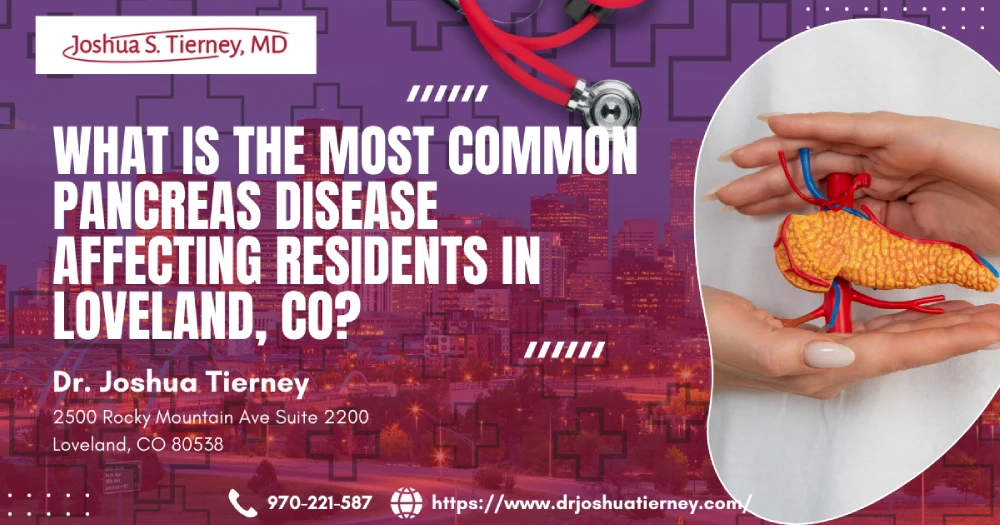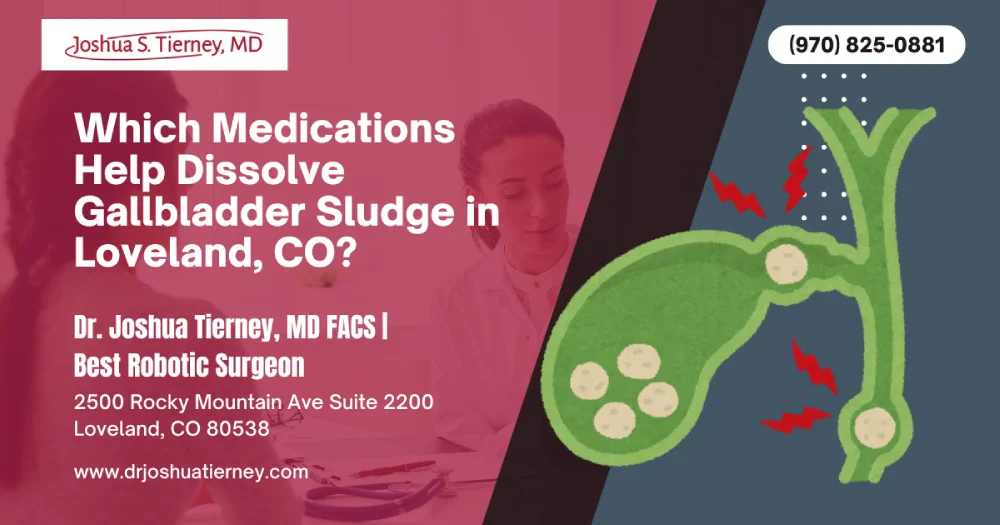While it’s difficult to pinpoint a single “most common” pancreas disease for every zip code, mounting evidence shows that pancreatic cancer—specifically pancreatic ductal adenocarcinoma (PDAC)—is the pancreatic condition most often diagnosed in Loveland, CO. Local gastroenterology practices, hospital cancer registries, and health-department data all rank PDAC higher than other diseases of the pancreas, including acute or chronic pancreatitis.
Below you’ll learn why PDAC edges out other pancreatic diseases, which symptoms demand a same-week appointment, and how you can tap into world-class diagnostics, minimally invasive surgery, and supportive care without leaving Northern Colorado.
Key Takeaways
- Pancreatic ductal adenocarcinoma accounts for roughly 90 % of pancreatic malignancies and remains the leading pancreatic diagnosis in Loveland and the greater Fort Collins area.
- Late detection is common—over 60 % of local PDAC cases are diagnosed at stage III or IV—so early diagnosis hinges on recognizing subtle abdominal warning signs.
- Loveland’s older demographic, ongoing tobacco use, and pockets of industrial chemical exposure combine to elevate cancer risk.
- Three modifiable risk factors—smoking, obesity, and chronic pancreatitis—cause the greatest uptick in PDAC incidence.
- UCHealth Medical Center of the Rockies now offers high-volume Whipple procedures, robotic surgery for select tumors, and clinical trials, reducing travel to Denver or Greeley.
- Smart lifestyle changes—quitting cigarettes, limiting alcohol, maintaining a healthy weight, and eating a produce-rich diet—can reduce lifetime PDAC risk by up to 30 %.
Understanding Pancreatic Diseases in Northern Colorado
Residents in Loveland, Greeley, and surrounding Larimer County encounter several pancreatic diseases. Knowing how each behaves helps explain why PDAC takes center stage.
Snapshot of Common Pancreatic Conditions and Their Local Frequency
| Condition | Estimated Incidence (per 100 k/yr) | Typical Age Range | Hallmark Symptom Cluster |
| Pancreatic ductal adenocarcinoma | 12–14 | 60 + | Jaundice, unexplained weight loss, dull abdominal pain radiating to the back |
| Acute pancreatitis | 30–40 ER visits | 30–55 | Severe epigastric pain, nausea, vomiting, elevated lipase |
| Chronic pancreatitis | 5–7 | 40–60 | Recurrent pain in the abdomen, steatorrhea, diabetes |
| Pancreatic cystic neoplasms | Rising with advanced imaging | 50 + | Often silent; occasionally abdominal fullness |
Why Pancreatic Cancer Overtakes Pancreatitis
Although acute pancreatitis lands more patients in the ER, episodes typically resolve or stabilize. Pancreatic ductal adenocarcinoma, by contrast, progresses silently, spreads to other organs, and drives higher mortality. That lethal combination makes PDAC a bigger public-health priority.
Silent Anatomy, Silent Symptoms
The pancreas sits deep in the abdomen, hugging the duodenum and bile duct. A growing tumor can obstruct the pancreatic duct or bile duct without causing early pain. By the time jaundice or severe weight loss surfaces, the cancer may have metastasized to the liver, bowel, or lungs.
Loveland-Specific Risk Factors
- Older population: Loveland’s median age hovers near 41, above the Colorado average; PDAC risk accelerates after age 60.
- Tobacco use: A 2022 Larimer County survey noted that 13 % of adults still smoke; tobacco doubles PDAC risk.
- Industrial history: Historic sugar-beet processing and light manufacturing exposed workers to certain solvents that may influence cancer development.
The Intersection of Pancreatitis and Pancreatic Cancer
Acute or chronic inflammation of the pancreas (pancreatitis) can raise long-term cancer risk. Understanding pancreatitis, therefore, adds context to PDAC prevalence.
Acute Pancreatitis: Causes, Severity, and Local Care
Acute pancreatitis flares when digestive enzymes activate prematurely, attacking the pancreas itself. Gallbladder stones that slip into the common bile duct, alcohol binges, and high triglycerides are top culprits. In Loveland and Greeley hospitals:
- Patients with acute pancreatitis receive IV fluids, pain control, and early nutrition.
- Severity in acute pancreatitis is triaged with the BISAP (Bedside Index of Severity in Acute Pancreatitis). A score ≥3 often lands patients in the ICU for close monitoring of organ failure, pancreatic necrosis, or abscess formation.
- Endoscopic retrograde cholangiopancreatography (ERCP) with placement of a stent can relieve biliary obstruction in high-risk biliary pancreatitis cases within 24 hours.
Severe acute pancreatitis affects roughly 20 % of cases and carries higher mortality, primarily from infected pancreatitis or systemic organ failure.
Chronic Pancreatitis and PDAC Risk
Chronic pancreatitis is ongoing pancreatic inflammation that leads to fibrosis, duct obstruction, and calcifications. Patients with chronic pancreatitis face a three-fold higher risk of developing PDAC over their lifetime, making routine imaging and endoscopic ultrasound (EUS) essential for early diagnosis.
Early Warning Signs You Should Never Ignore
Early-stage PDAC is curable, but only 15 % of patients present early enough for surgery. Recognize these red flags:
- Persistent upper-abdominal or mid-back pain unrelieved by antacids.
- Unexplained weight loss exceeding 10 lb in a few months.
- New-onset diabetes after age 50—especially if you’re of normal weight.
- Dark urine, clay-colored stools, or itchy skin from bile duct blockage.
- Sudden jaundice or scleral icterus.
If these develop, request an appointment with a Loveland gastroenterologist for a CT scan or EUS within two weeks.
Who’s at Risk? Loveland-Specific Data
Modifiable Risk Factors
- Smoking and vaping nicotine products.
- High-fat, low-fiber diets heavy in processed meats.
- Excess alcohol (more than two daily drinks) provoking pancreatic inflammation.
- Obesity—the most underestimated risk factor in the Fort Collins area.
Non-Modifiable Risk Factors
- Age > 60.
- Family history of pancreatic cancer, BRCA2, or Lynch syndrome.
- Chronic pancreatitis, cystic fibrosis, or long-standing Type 2 diabetes.
Diagnostic Tools Readily Available Near You
A Step-by-Step Diagnostic Pathway
- Laboratory work: Liver enzymes, lipase, and CA 19-9 tumor marker.
- Imaging: Multi-phase CT scan or MRI at UCHealth Medical Center of the Rockies.
- Endoscopic ultrasound with on-the-spot biopsy—useful for early stage lesions <2 cm.
- ERCP: Combines imaging and therapeutic options such as duct dilation or stent placement.
- Genetic testing for patients with pancreatic cancer at a young age or with a strong family history.
Interpreting Severity in Acute Pancreatitis
Radiologists grade acute pancreatitis severity on the CT severity index, while clinicians lean on BISAP and the revised Atlanta classification. A high score predicts necrosis, infected pancreatic collections, or pseudocyst of the pancreas—complications that may require intensive care, drainage, or minimally invasive surgery.
Treatment Pathways and Local Resources
Surgical and Nonsurgical Options
- Whipple procedure or distal pancreatectomy for resectable tumors—now available via open, laparoscopic, and robotic surgery platforms.
- FOLFIRINOX or gemcitabine-nab-paclitaxel chemotherapy protocols through Banner MD Anderson in Greeley.
- Intensity-modulated radiation therapy for borderline-resectable tumors invading the duodenum or vascular structures.
- Complex biliary surgery for simultaneous bile duct stones or strictures.
When ICU or Advanced Support Is Needed
Severe pancreatitis with organ failure requires ICU admission, sometimes mechanical ventilation, renal replacement therapy, or endoscopic drainage of abscesses. Loveland’s Medical Center of the Rockies maintains an advanced intensive care unit staffed by pancreatology-trained critical-care specialists.
Supportive Care to Protect Quality of Life
Nutrition teams guide enzyme supplementation for pancreatic insufficiency, while social workers monitor emotional well-being in the Fort Collins community. PanCAN Loveland support groups and Look Good Feel Better® workshops meet monthly, providing peer connection for patients with pancreatic cancer or colon cancer arising in the same family.
Prevention and Daily Habits for Pancreatic Health
- Stub out cigarettes—nicotine inflames the pancreatic duct and hinders healing.
- Maintain 150 minutes of moderate exercise weekly to curb obesity.
- Opt for whole grains, beans, fish, and cruciferous veggies; limit processed meats to cut cancer development risk.
- Moderate alcohol—one drink per day for women, two for men—to prevent biliary pancreatitis.
- Keep up with annual primary-care visits to detect early metabolic changes or bowel irregularities.
Supplements? Skip mega-doses. A balanced diet rich in antioxidants—think blueberries, kale, and turmeric—benefits digestion and overall pancreatic well-being.
Conclusion
Pancreatic ductal adenocarcinoma stands out as the most common—and most worrisome—pancreatic disease for Loveland residents. Its stealthy nature underscores the need for early symptom recognition, timely imaging, and proactive management of risk factors such as smoking, obesity, and chronic pancreatitis.
If you spot even subtle signs—jaundice, unexplained weight loss, or persistent abdominal pain—schedule an evaluation now with Dr. Joshua Tierney. Early intervention truly saves lives.
FAQs
How is biliary pancreatitis different from alcohol-related pancreatitis?
Biliary pancreatitis stems from gallbladder stones blocking the common bile duct and pancreatic duct. Removing the obstruction—often via ERCP and stent placement—usually resolves the inflammation. Alcohol-related pancreatitis results from direct toxic injury to pancreatic cells, requiring complete alcohol cessation, nutritional support, and sometimes treatment of severe acute pancreatitis complications.
Can acute pancreatitis turn into chronic pancreatitis?
Yes. Repeated attacks of acute pancreatitis, especially in smokers or heavy drinkers, can scar the gland, narrow the pancreatic duct, and evolve into chronic pancreatitis. Chronic disease brings ongoing abdominal pain, malabsorption, and a higher lifetime risk of pancreatic cancer, so aggressive management of early attacks is crucial.
What is the bedside index of severity in acute pancreatitis (BISAP)?
BISAP is a five-point scoring tool applied within 24 hours of admission. It evaluates blood urea nitrogen, impaired mental status, systemic inflammatory response, age > 60, and pleural effusion. A BISAP score of 3 or more predicts higher rates of organ failure and ICU admission, guiding early resource allocation.
Does robotic surgery improve outcomes for pancreatic tumors?
Robotic surgery offers enhanced visualization and wristed instruments, allowing precise dissection around vital vessels. In selected early-stage tumors, robotic Whipple or distal pancreatectomy can shorten hospital stay, reduce blood loss, and speed recovery compared with traditional open pancreatic surgery, without compromising cancer margins.
Are pancreatic cysts always dangerous?
Not all pancreatic cysts mean cancer. Serous cystadenomas are usually benign, whereas mucinous cystic neoplasms and intraductal papillary mucinous neoplasms carry malignant potential. Endoscopic ultrasound with biopsy helps classify the cyst, estimate risk, and build a personalized treatment plan ranging from surveillance to surgical removal.
How soon should patients with pancreatic necrosis be debrided?
Current guidelines recommend waiting three to four weeks after onset of severe pancreatitis for walled-off necrosis to mature. Delayed, minimally invasive necrosectomy or endoscopic drainage lowers complications compared with early open debridement. Emergent intervention is reserved for infected pancreatic necrosis with organ failure.
Can ERCP cause pancreatitis?
Yes. Post-ERCP pancreatitis occurs in 3–10 % of cases, especially in young women, patients with sphincter of Oddi dysfunction, or difficult cannulation. Using rectal indomethacin, pancreatic-duct stenting, and experienced endoscopists reduces this high-risk complication while still enabling diagnosis and treatment of complex biliary surgery problems.
Why do some pancreatic cancers spread to other organs so quickly?
PDAC cells possess genetic mutations enabling early invasion into blood vessels and lymphatics. The absence of a true capsule around the pancreas lets tumors infiltrate the duodenum, bile duct, and surrounding fat rapidly. That biologic aggressiveness explains why early diagnosis and treatment are paramount.
Is there a screening test for people with several risk factors but no symptoms?
High-risk individuals—BRCA carriers, first-degree relatives of patients with pancreatic cancer, or those with hereditary pancreatitis—may qualify for annual MRI/MRCP or endoscopic ultrasound beginning at age 50 or ten years younger than the earliest family case. Screening aims for early stage detection before symptoms emerge.
How does pancreatic inflammation affect the organ’s role in digestion?
Inflammation destroys enzyme-producing acinar cells and can block the pancreatic duct. The result is exocrine pancreatic insufficiency: fat, protein, and carbohydrate malabsorption, leading to weight loss, gas, and greasy stools. Pancreatic enzyme replacement therapy restores digestion and improves quality of life for affected patients.









